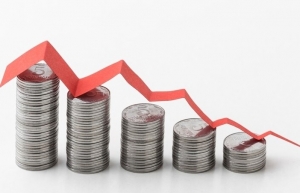Central bank preparations underway for Fed rate move
How have central banks in major economies acted in recent times in the face of weaker-than-expected growth?
 |
| Trinh Ha, a financial market analyst from Exness Investment Bank |
Major central banks around the world have cut interest rates and are expected to continue cutting.
The European Central Bank reduced its key deposit rate a quarter point to 3.5 per cent. In a close 5-4 vote in August, the Bank of England lowered its bank rate from a 16-year high of 5.25 per cent to 5 per cent. Governor Andrew Bailey, though, stated that caution would be exercised to ensure that inflation remained low.
The Bank of Canada reduced its benchmark policy rate by 25 basis points to 4.25 per cent last week as anticipated, although it voiced concern that the rate of inflation might fall too quickly due to weaker-than-expected growth. The bank began the easing cycle in June after holding its benchmark rate at a two-decade high of 5 per cent for a year, citing inflation.
On the contrary, as the country fights a weakening yen, the Bank of Japan has decided to slow the pace of its government bond buying to ¥3 trillion ($20 billion) and raise its policy interest rate to roughly 0.25 per cent. This represents a further move towards policy normalisation.
The biggest expectation is that the Fed is expected to start cutting interest rates this month based on economic data. If the Fed raises interest rates a lot, it may cause a recession – known as a hard landing. However, if the Fed can raise interest rates just enough to slow the economy and reduce inflation without causing a recession, it has achieved what is known as a soft landing.
The Fed is likely to cut rates twice in the remainder of 2024, in September and December. The US inflation rate fell from 3.7 per cent in the first quarter of 2024 to 2.9 per cent in the second quarter. These figures further reinforce the belief in a soft landing scenario that brings inflation back to the 2 per cent target but also ensures that it does not lead to a US recession.
The slowing economy as mentioned above will cause companies that have grown rapidly in the recent period to have slower growth combined with valuations in the relatively high range, which may cause the market to correct sharply in the coming time.
In addition, mid-cap and penny stocks have also recovered quite well. However, at this stage, large economies such as the US and EU are in the middle of the recovery process that stems back from the pandemic.
If calculated by GDP potential, these economies have fallen into recession and recovered in the past two years. This is not a good time to help these stocks recover, but we need to wait for more recovery after the interest rate reduction. The market may be under further pressure from this group of stocks.
How does the Fed’s interest rate cut affect the Vietnamese stock market?
The interest rate cut may affect the trend of reallocating investment capital in the global stock market. Lowering interest rates without a US economic recession will have a positive impact on stock markets, including Vietnam.
Foreign investors’ capital flows show signs of returning to the markets of Indonesia, Thailand, and Malaysia. However, according to my observation, in the period before the Fed raised interest rates, a lot of money flowed back to the US to take advantage of the Fed’s interest rate cuts.
This process may last until the Fed cuts interest rates to a stable level, then the money flows will move strongly into emerging markets. At that time, the money flows will likely reverse and reallocate to emerging and frontier markets like Vietnam. This is also good news for the financial market and good news for businesses, people can access credit capital at low capital costs.
The net withdrawal of foreign investors has continued strongly since the beginning of the year. When can this process be stopped and reversed?
According to observations, immediately after the Fed reduces interest rates, the net cash outflow does not stop but only slows down.
Usually, it is only when interest rates decrease to a low and stable level that the cash flow returns in large numbers due to the new capital cost being low; interest rates in the US being significantly low, no longer attractive to attract cash flows; and there no longer being a loss in exchange rates when investing in Vietnam when the exchange rate has stabilised.
So we should prepare for situations in advance, make plans for the market direction in these cases, have specific capital outflow plans, and choose the right investment industry/stock type according to the economic cycle.
The USD/VND exchange rate has been weakening in recent times – but will this trend continue, and which industries or groups of companies will benefit?
The trend will continue when the Fed cuts interest rates in September, and it is important to observe more data on consumption and employment to see the next cut process.
In addition, lowered interest rates also reduces pressure on Vietnam’s policy, causing pressure on exchange rates to increase. The State Bank of Vietnam does not need to sell foreign currency to stabilise the exchange rate any more and does not have to bear pressure to increase interest rates, maintaining support for the economy.
 | US Fed rate cuts could come before third quarter: official The US Federal Reserve could begin cutting interest rates "sooner than the third quarter" of this year, a voting member of the central bank's rate-setting committee said Thursday. |
 | US Fed rate cuts become question of when, not if The US Federal Reserve is widely expected to start cutting interest rates in the coming months, as inflation edges closer to its long-run target of two percent. |
 | Gold hits another record high on Fed rate cut bets Gold hit another fresh record high Monday as investors grow confident that the Federal Reserve will cut interest rates this year, even after data showed a slight uptick in a key inflation report. |
What the stars mean:
★ Poor ★ ★ Promising ★★★ Good ★★★★ Very good ★★★★★ Exceptional
Related Contents
Latest News
More News
- Tax sector wraps up 2025 and sets priorities for next year (December 25, 2025 | 14:00)
- A tipping point for digital and hybrid wealth management in Vietnam (December 23, 2025 | 13:33)
- $250 million deal targets women-owned SMEs, sustainable agriculture (December 22, 2025 | 17:40)
- Stock market posts resilient 2025 performance (December 19, 2025 | 18:17)
- Citi Vietnam receives 2025 AmCham CSR recognition (December 19, 2025 | 16:35)
- As global green supply chain reshapes, will Vietnam be left behind? (December 19, 2025 | 08:00)
- Banks gear up for massive capital increases (December 18, 2025 | 17:04)
- Securing capital and efficiency for Vietnam’s 2026-2030 growth ambitions (December 17, 2025 | 10:00)
- Energy sector in need of blended finance mechanisms (December 17, 2025 | 09:00)
- Vietnam still has room to mobilise capital for sustainable growth (December 17, 2025 | 08:57)

 Tag:
Tag:





















 Mobile Version
Mobile Version